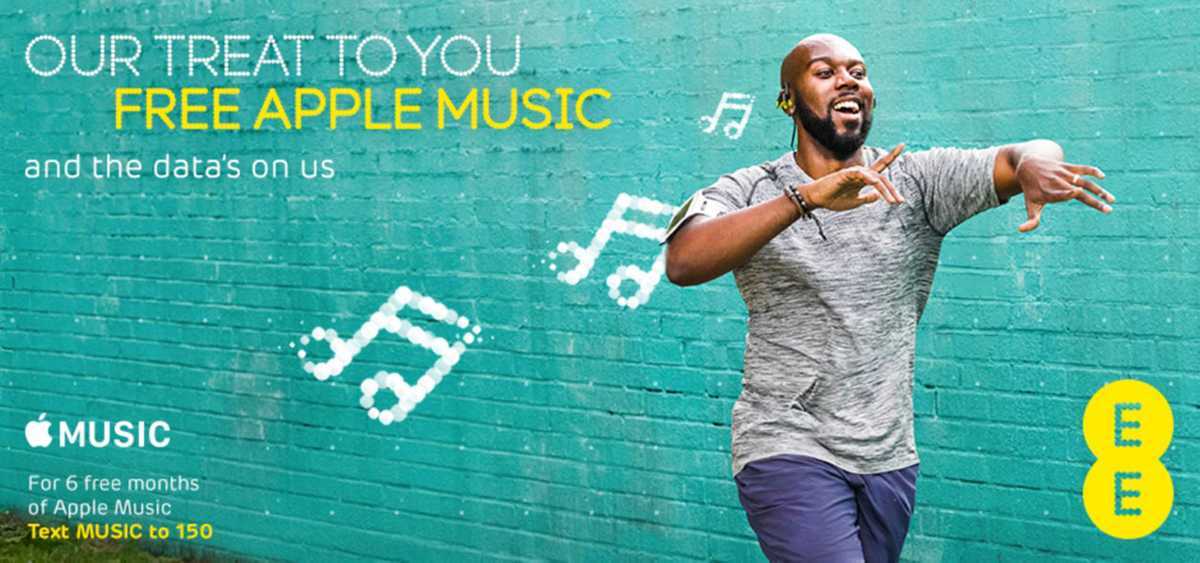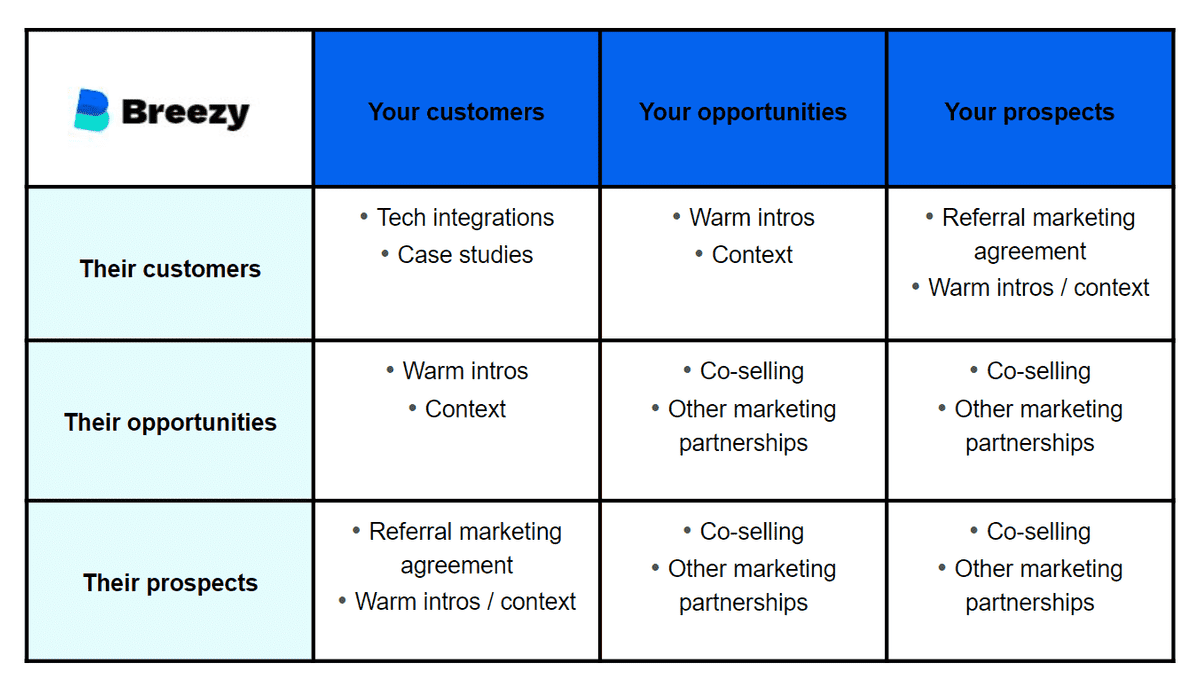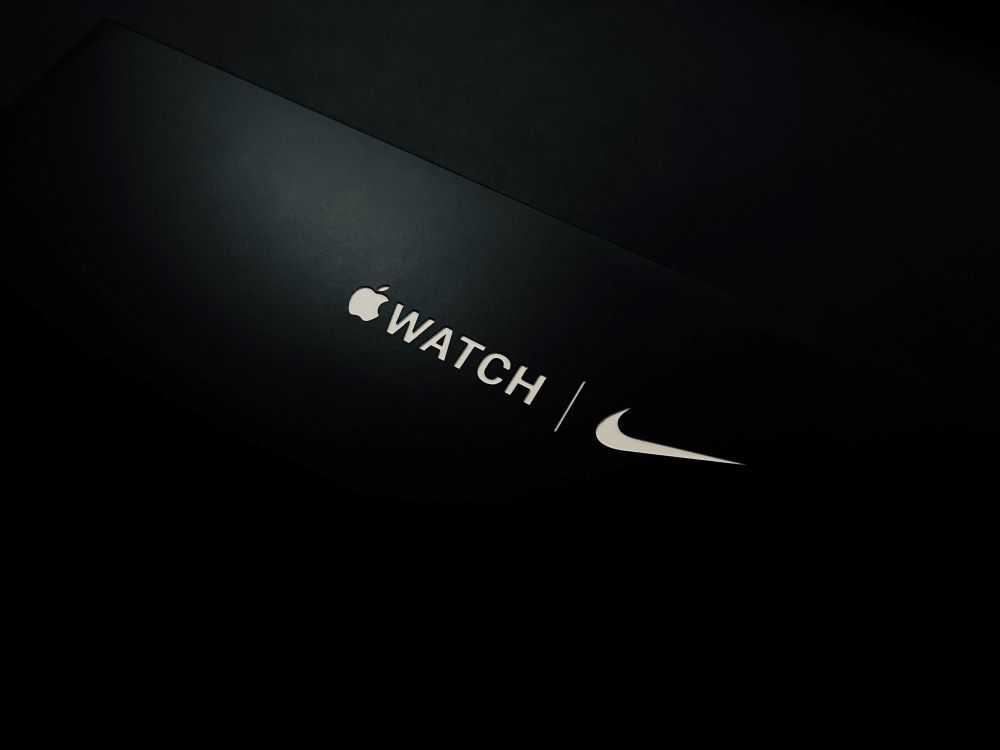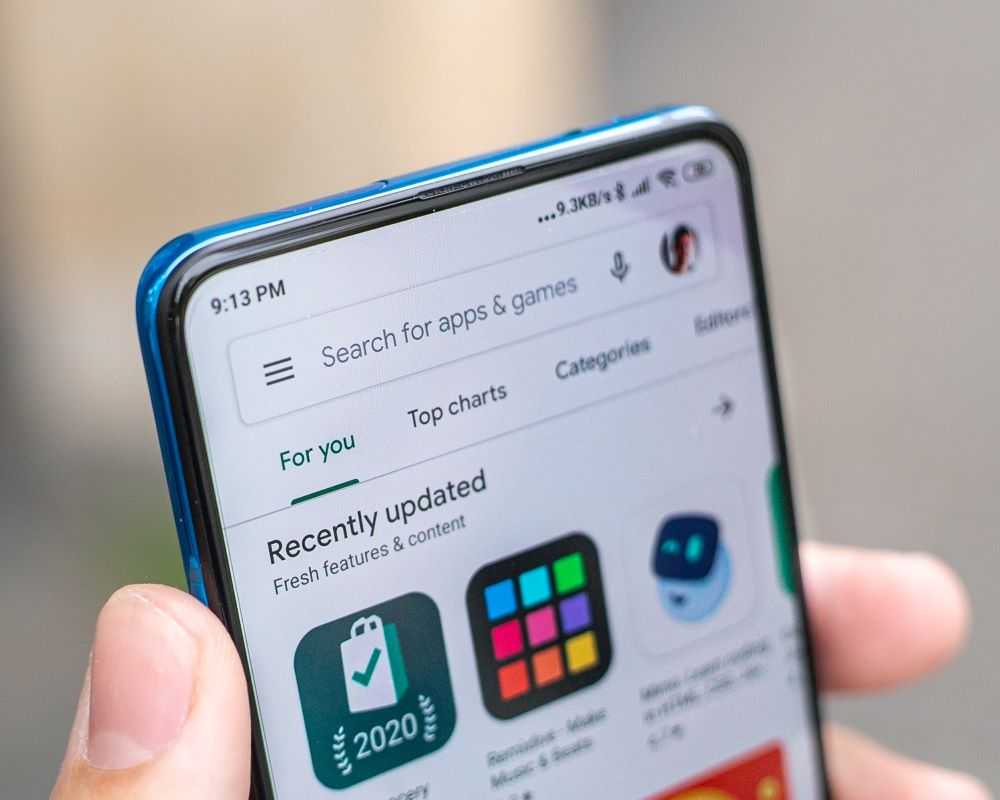Types of B2B partnerships: the complete breakdown
- Publication date
- Author
- Imogen Beech
- Reading time
- 20 minute read
The chances are you’re familiar with the huge benefits of strategic partnerships. Figures released by Wolfgang Digital and Forrester show that partnerships generate high-growth businesses with more revenue than paid search. Meanwhile, Hinge revealed that high-growth brands are three times more likely to use marketing partnerships as part of their overall strategy than no-growth firms.
But there are so many types of strategic partnerships that if you’re looking to jump on the partnership bandwagon, it can be hard to know where to start.
There are your obvious content partners like newspapers, bloggers and influencers. These entities are naturally well-positioned to promote brands through collaborations like content marketing and affiliate marketing.
However, other like-minded businesses can also make fantastic partners. And these collaborations can take more forms than you might think (hint: all the things that content partners can help you with could also be gained through a B2B partnership). Here, we’ll hone in on these partners to explore all the types of B2B partnerships that you might want to have in your arsenal.
There are countless ways that like-minded businesses can collaborate in a B2B partnership. So much so that it would be impossible to list all of them! After all, there’s no rulebook when it comes to the ways that businesses can choose to work together.
But there are many B2B partnerships that we see crop up again and again. And these partnerships tend to fit broadly into three main categories: marketing partnerships, distribution partnerships, and product partnerships. Here, we’ll delve into each of these categories and reveal the B2B partnerships that you can expect to find in each.
Yes, there are some types of B2B partnerships that we could have put in multiple categories. And some that didn’t fit neatly in any one category at all. In fact, we could talk all day about the nuances of each individual type of B2B partnership and where it could belong.
That said, this guide offers a lowdown of the formal types of B2B partnerships you’ll hear discussed. Whether you’re looking to form your own B2B partnerships for the first time, or you want to shake up your existing partner programs a little, we hope it will give you the knowledge and foundations you need as a springboard to get creative!
In a marketing partnership, businesses collaborate on a strategic marketing campaign. This might involve one business promoting another, or it might involve partner brands teaming up to market both their products. Either way, this kind of partnership is frequently known as partner marketing.
Here are the B2B partnerships you can expect to find under this umbrella term.
An affiliate marketing partnership is when a brand agrees to promote a partner’s products or services in exchange for a performance-based reward.
Typically, when we think of affiliate marketing, we imagine content partners doing the promoting – by which we mean entities such as online newspapers, comparison sites, review sites, affiliate bloggers and influencers. But affiliate marketing can also be a type of B2B partnership.
Let us explain. Any entity that’s in a position to promote another brand’s product on a performance basis could operate as an affiliate. And that includes most businesses!
In fact, like-minded businesses can make fantastic affiliates. Imagine you run a business that hires out marquees. A fantastic affiliate for you could be an outdoor wedding venue – after all, their customers are highly likely to be in the market for a marquee! The wedding venue would simply need to promote your services to their customers and then enjoy receiving a commission on any sales they help to make – it’s a win for you, a win for them and a win for your joint customers!
To get started with affiliate marketing, you simply need to create an affiliate program for your business and get like-minded brands to sign up to it. You can either create an in-house affiliate program or you can sign up with an affiliate network (either way though, don’t forget to use Breezy to find businesses that could make great affiliates for you). Your partner brands will get assigned a unique tracking link that they can use to promote your products, enabling them to get rewarded when their efforts result in a conversion. Simple!
Alternatively, if you’re looking to add a revenue stream to your business by promoting another brand’s products, you just need to sign up to another brand’s affiliate program. Then, you can start advertising their products and earning performance-based commissions. Our blog on how to become an affiliate marketer has more.
Content marketing partnerships involve partners collaborating to market their products or services using content.
Again, content marketing partnerships are frequently associated with content producers like newspapers and bloggers. But in reality, content marketing partnerships can be just as successful – if not more so – when two like-minded businesses join forces.
B2B content marketing partnerships can take many different forms. However, they typically fit into one of three groups:
By teaming up, brands are able to share or combine their expertise to create fresh, original content for their audiences. They can also tap into one another’s channels to expand their reach (that’s where content marketing partnerships can overlap with distribution partnerships, which we’ll get to later!).
One particularly popular form of content marketing partnership involves brands collaborating on long-form written content with the aim of improving their SEO (search engine optimisation). In short, by teaming up with a trusted business that is happy to link to your website from theirs, you might be able to improve your reputation in the eyes of search engines such as Google, to improve your ranking in the SERPs (search engine results pages). Our guide to content marketing partnerships has the full lowdown.

Co-branding involves businesses combining their branding to leverage both their reputations. There are two types:
Product-based co-branding is particularly common in the food industry. For example, Taco Bell and Doritos made the news when Frito-Lay added a Doritos shell to its renowned Taco Bell crunchy taco recipe.
This kind of co-branding shares a big overlap with joint product partnerships, which we’ll cover a bit later. However, the focuses are slightly different.
Co-branding is primarily a marketing exercise, designed to command attention, reach new audiences and drive more sales. On the other hand, product partnerships are centred around creating a new product or improving an existing one, to provide a better experience for consumers.
Comarketing is a B2B partnership that involves businesses teaming up to promote something.
It often goes hand in hand with co-branding. While a co-branding partnership involves businesses adding both their branding to something, a comarketing partnership involves them using their respective channels to promote it.
Comarketing can look very different depending on the agreement reached. For instance, businesses might team up to promote anything from an event to a white paper, a blog to a product. However, one popular form of comarketing centres around exclusive content.
In this instance, partner brands collaborate to create an informative piece of content such as an ebook, webinar or template (a form of content marketing). The partners publish it behind a lead generation form or email capture wall and promote it – in order to access the content, users have to enter their details, which can then be accessed by both businesses.
As you can imagine, generating exclusive content like this is a great way for businesses to generate new leads or expand their email marketing lists. By collaborating on the content itself, businesses can combine their expertise to create something truly useful and sought-after. And by marketing it to their respective audiences, they’re each able to benefit from their partner brand’s reach, generating more leads together than they could alone.
The chances are you’ve heard of sponsorship marketing. If you enjoy watching sports you’ll be familiar with seeing brand names in all sorts of places, from board advertisements in stadiums to brand logos on team kits. Alternatively, perhaps you’ve noticed your favourite TV or radio show declaring that it’s ‘proudly sponsored by’ a well-known brand.
Sponsorship is essentially when one partner is able to link itself to the activities of another, in exchange for supporting them.
While sponsorship is often associated with entertainment such as sports and the media, it’s also a popular type of B2B partnership – particularly when it comes to events.
Let’s say your business is hosting a conference, a company awards ceremony or a gala dinner. You could likely benefit from some investment from other businesses, whether that’s through financial contributions or by obtaining the use of their services for free or for a discounted rate.
By offering sponsorship opportunities, you can obtain the valuable support of partner brands in exchange for promoting them alongside your activities. For instance, you might put their brand name in the title of your event (think the ‘Virgin London Marathon’) or the name of your venue (like the 'Emirates Stadium'). You might advertise them in your event program or you might let them host a session so they can demonstrate their expertise to your attendees.
In this way, both businesses benefit – the sponsee gets valuable support towards running an activity like an event, while the sponsor receives a boost to its reach and brand awareness.

In an incentive marketing partnership, a business incentivises sought-after customer behaviours with rewards provided by partner brands.
Depending on their goals, businesses might choose to reward all sorts of customer behaviours – from making a first purchase to entering a competition or referring a friend.
However, one kind of incentive marketing you’re sure to have heard of before is loyalty marketing. This is when a business incentivises loyalty. It goes without saying, then, that a loyalty marketing partnership is when a business incentivises loyalty using rewards provided by a partner brand.
Large brands will often partner with multiple businesses to provide these rewards, which are usually promoted and distributed via a loyalty program. This way, consumers can choose the rewards most valuable to them, which provides an even greater incentive.
Tesco is a great loyalty marketing example. Customers who sign up to the supermarket chain’s loyalty program are issued with a Clubcard. When they make purchases, they’re able to scan their card to earn Clubcard points, which can be used towards purchases with a range of rewards partners including English Heritage, Cottages.com and the RAC.
In this kind of B2B partnership, one company agrees to send business to another. They might do this in exchange for a financial reward, such as a commission on sales (this is where referral agreements can overlap with affiliate marketing). Or, businesses might agree to work together on a tit-for-tat basis, where they each send business to one another.
When referral agreements are done right, they’re beneficial to the consumer as well as to both businesses. Let us explain.
Imagine you run an estate agents. Once your client gets an offer accepted to purchase a property, they’ll need a conveyancing solicitor to handle the legal side of things. By recommending a firm that you know and trust, you could help your client to pick a solicitor quickly and confidently.
Meanwhile, the conveyancing solicitor benefits from receiving warm leads from your business. And, as long as you have a good referral agreement in place, you could also profit financially from the recommendations you make, by earning a referral fee whenever a client you refer converts. It’s a win, win, win!
Now onto our second category of B2B partnerships. Distribution partnerships are all about a business using its distribution channels to help bring value to another.
A business might use its distribution channels to promote a partner brand’s products or services (which shares a clear overlap with partner marketing). Or, it might use its channels to bring a partner brand other benefits, for instance helping it to reach new markets. Here are the main types.
Also known as cross-marketing, cross-promotion is when one business distributes another business’ promotions to its audience.
We’re sure you’ll have come across it before. Perhaps you’ve received a free sample from an unknown brand when you’ve purchased a product from one of your favourite brands. Or maybe you’ve simply opened an e-shot from one brand promoting another.
With cross-promotion, a brand is essentially leveraging another brand’s distribution channels to market its products – whether that’s in-store, on a website, by email, on social media… the list goes on.
As long as partner brands are aligned in their ethos and share a similar audience, cross-promotion can be extremely effective. After all, when a brand has built up a trusted relationship with its customers, any promotions it distributes for a partner brand are effectively being shared with warm leads. This endorsement can make a big difference when businesses are having to compete for a consumer’s attention.
This type of B2B partnership involves partner brands combining their offerings. There are two main types of bundling: hard bundling and soft bundling.
Hard bundling is when businesses group their products together and let consumers buy them for a fixed price. This is quite common when it comes to technology, as often, two businesses’ products provide a stronger offering when sold together as part of a package or set. Just think: you might buy a laptop that comes with a particular anti-virus software.
Subscription boxes offer another example of hard bundling. For instance, LOOKFANTASTIC’s subscription boxes collate six beauty products from different brands every month.
On the other hand, soft bundling is when businesses combine their offerings but their products have to be bought separately rather than together.
A fantastic example is mobile network provider EE, which gives new users six months of free Apple Music. After joining EE, users who want to take up the deal have to use an activation code to then sign up directly with Apple. It’s a great incentive to encourage consumers to join EE (in fact, it could be seen as an example of incentive marketing), and it’s a great way for Apple to gain new users too.

Reselling is where one business buys a product from another and then sells it on after marking up the price.
A reseller is essentially a partner that sits between a business and the end consumer. They can be:
As you can see, there can be multiple resellers involved in getting a product to the final consumer. In fact, even then, a consumer could effectively become a reseller by flipping an item they’ve bought using a platform like Facebook Marketplace or Gumtree (although of course, this wouldn’t count as a B2B partnership).
Reselling can be extremely beneficial to all the parties involved. For the manufacturer, a reselling partner allows them to focus on what they do best – making a product without having to spend time, effort and resources marketing it to the end consumer. They’re also able to sell their products in bulk, as resellers tend to buy large quantities at once.
Meanwhile, resellers can focus on doing what they do best – selling stock rather than having to spend time, money and resources designing and manufacturing a product themselves. In fact, some resellers are even able to add their own branding to the products they resell, known as ‘white labelling’ – we’ll talk about this a bit more when we come to licensing agreements.
Also known as ‘solution selling,’ co-selling is when sales reps or teams from two businesses work together in order to better sell solutions to a customer.
Co-selling is particularly common with businesses that sell technology or software, as often, a technology will be able to solve a customer’s problem better when it’s combined or integrated with another product. In this case, two sales reps or teams from partner brands will work together to sell their individual products or softwares to the end consumer at the same time, working in tandem to hone their go-to-market strategies and messaging.
However, co-selling is also popular amongst brands from different parts of a supply chain, known as a channel partnership. In this case, two businesses – often the vendor and a reseller – will combine their knowledge and expertise to better pitch a solution to the end customer. While the vendor knows the product best, the reseller knows the customer best, so by working together to combine their knowledge, they can sell more effectively.
A study conducted in 2017 by Concur showed that 77% of businesses taking part in co-selling partnerships see an increase in their profits since adopting the model.
This type of B2B partnership is all about data sharing. In a lead account mapping partnership, businesses create lists of their customers and leads, before cross-referencing them with their partner’s lists to see where there are overlaps. They then work together to decide how to use those overlaps to their advantage.
Normally, businesses working together in this way will each identify three types of leads: customers (those already paying for the product), opportunities (potential customers already in the business’ pipeline) and prospects (potential customers who haven’t yet entered the sales process). Depending on where the overlaps lie, brands can create a strategic plan to make use of their mutual leads.
For instance, brands that share a number of the same opportunities or prospects might decide to embark on a co-selling collaboration. Or, SaaS businesses that share many mutual customers might consider integrating their products to improve their customers’ experience using both.
However, one very common way of utilising the data uncovered from lead account mapping is through warm introductions. Essentially, where a consumer is a customer for one partner brand and a prospect for another, the first brand could facilitate an introduction to their partner – and vice versa. In this way, a partner brand can help to turn a cold lead into a warm one, making them easier to convert.

In a licensing agreement, a business allows a partner to use its intellectual property, while retaining ownership of it. For example, a business might allow a partner brand to manufacture its products or sell them (which is where licensing overlaps with reselling). It can even give another brand permission to use its name and logo!
A few key kinds of licensing agreements include:
A supply chain partnership is when businesses from different parts of a supply chain work together to meet shared objectives.
In a supply chain, one business is essentially outsourcing the manufacturing of a product (or part of a product) to another – which can be quite a transactional relationship. A supply chain partnership, on the other hand, goes a step further.
Here, businesses across the supply chain align their objectives and work together more closely to meet them. For instance, they might collaborate to reduce costs, improve the performance of certain parts of the supply chain or improve customer service.
The film industry contains many examples of supply chain partnerships. Normally, a fairly small production house will take care of the filming and post-production, while a much larger studio will take care of the financing, marketing and distribution.
The technology sector is also riddled with supply chain partnership examples. One that's well-known is Intel, which makes processors for many different computer manufacturers.
This type of B2B partnership is when one business makes room in its shop for another – either in a physical store or online.
When it comes to physical shop sharing, you’ll often see cafes located within department stores and bookshops – think Caffè Nero in Waterstones. The coffee shops benefit from being in a spot with guaranteed footfall, whereas the stores themselves can extend the duration of shopping trips by better meeting their customers’ needs.
Stores might also give a partner brand a dedicated desk or promotional stall within their shop (think John Lewis with various cosmetic brands). Or, smaller businesses might team up to rent a pop-up shop, splitting the cost of rent while increasing their reach by getting exposure to one another’s audiences.
Online shop sharing works in much the same way. A business might set up a member’s area with exclusive content where other brands could be featured, or they might dedicate a page to a partner brand. They could even display a page from a partner’s website within their own website, called iFraming.
Shop sharing both in-person and online shows consumers that partners endorse one another, which can enhance trust amongst consumers and make them more likely to make a purchase.
Now for our final category of B2B partnerships. Product partnerships are all about partner brands working together to improve their offering.
You’ll often hear them referred to as technology partnerships, as many of the collaborations we’ll cover here are specific to tech. However, product partnerships can also take place between brands that work together to improve products or services that aren’t centred around technology. Here’s the lowdown.
A joint product partnership is when businesses team up to create a new product, or to improve an existing one.
These kinds of partnerships are particularly common when it comes to groundbreaking or futuristic inventions, like flying cars or space exploration. That’s because these products are so technologically complex that it would be extremely challenging for one business to nail them alone. By teaming up with a partner, businesses can share expertise and resources to make headway.
That said, joint product partnerships can also be useful in other areas. Tech giants like Google or Microsoft may rely on smaller, more agile companies to help them act quickly to launch new products and stay ahead of the competition. Of course, for a startup, partnering with one of these giants provides valuable endorsement and sought-after resources.
Alternatively, two well-known brands might create a product that contains both of their identities, to leverage both their reputations and individual strengths. Just look at the Apple Watch Nike! This is where joint product partnerships share a large overlap with co-branding.

An integration partnership is when two or more SaaS businesses connect their products. They do this by building an app between their systems.
Integration partnerships are generally centred around improving user experience. If two businesses share many of the same customers, integrating their solutions might allow users to enjoy them more seamlessly. For instance, it might be useful for them to access, share or move data easily between the different products.
These partnerships are also a great way for businesses to add more features to their software without having to spend time and money building new solutions from scratch.
Ultimately, integrating technologies in this way is about improving the value of products to their users. The more valuable a product is, and the better the customer experience, the easier businesses will find it to retain their users and attract new ones.
A product extension merger, also known as a congeneric merger, is when two businesses merge and group together their products. This allows them to expand their product line and get access to a bigger pool of customers.
Just bear in mind that this is a complex and legally entangling kind of partnership, which involves two businesses becoming one legal entity. So, it shouldn’t be embarked upon lightly!
To form this type of B2B partnership, businesses need to operate in the same market but provide different products that complement or are closely related to one another. That way, the merging businesses can seamlessly become one brand with a suite of products that naturally fit together.
A good example is the acquisition of Pizza Hut by PepsiCo, way back in 1977. After the acquisition, diners at the much-loved pizza chain were only able to purchase drinks in the PepsiCo line, allowing the soft drinks maker to reach a bigger pool of customers. Within a year of the merger, sales almost exceeded $436 million!
A platform partner is a business that provides the platform through which another business’ products or services can be accessed.
This one’s easiest to explain with the help of a couple of examples. Let’s imagine you develop apps for a living. Your platform partners will probably include Apple and Google, as consumers will need to download and access your apps through their app stores.
Alternatively, let’s say you run a business that builds Squarespace sites. Squarespace would be a platform partner as the brand forms an integral part of your offering.
You could argue that any platform you use to run your business is a platform partner – from your project management software to your CMS. However, there’s a fine line between being a partner and a customer! So, where do you draw the line?
Well, we’d argue that platforms you use internally would constitute more of a transactional relationship than a partnership, unless the team behind the platform works with you closely to ensure it meets your needs. On the other hand, any platform that places limits and boundaries on your product and its design would count as a partnership, as you’re essentially crafting your product in conjunction with the platform.

Outsourcing is a type of B2B partnership that involves a business delegating an element of its operations to another business. For example, a business might use a social media agency to manage its social channels or hire an external partner to handle its customer service.
You might be wondering what makes outsourcing a partnership rather than simply a traditional B2B client model. Well, there is little difference. But if businesses work closely together to align their goals – and if an outsourcing agreement is integral to the working of a business – that sounds like a partnership to us! Especially when a partner comes to form a large part of a business’ identity.
Outsourcing is one of those B2B partnerships that doesn’t fit neatly into any one category. Supply chain partnerships, which we’ve listed under ‘distribution partnerships,’ could be seen as a kind of outsourcing as here, businesses essentially outsource the manufacturing of a product (or an element of a product). Similarly, if a business outsources its content marketing, it could be seen as a content marketing partnership.
Ultimately, it’s a great reminder that partnerships can be whatever you make them. It’s all about what works for you and your partner, and there’s no right or wrong!
A joint venture is when two or more businesses (known as parent companies) join forces to create a smaller business together (known as a child company).
There are four kinds that businesses can choose from:
This type of B2B partnership is another that doesn’t fit neatly into any one category. While a joint venture that involves businesses working together to form a new product is undoubtedly a product partnership, one that involves businesses teaming up to break into new geographical markets would probably fit more naturally under distribution marketing.
Ultimately, joint ventures are less a type of partnership and more a way to legally structure one. They allow businesses to remain competitive and share resources while maintaining their independence.
As you can see, there’s a huge range of B2B partnerships out there. So, deciding which types are best for your business can be daunting!
If you’re wondering where to start, we’d recommend beginning by considering your objectives. What is it that you hope a partnership can help you achieve for your business? This will help you to shortlist some B2B partnership types that could fit the bill.
For instance, if you need to increase brand awareness, you’ll probably want to focus on partner marketing. Meanwhile, if you want to break into new markets, a distribution partnership is more likely to be your cup of tea.
Just remember that you don’t need to pick just one type of B2B partnership. There’s no reason why you can’t mash up a few different types to create a partnership that works perfectly for you and your partner brand – or invent a new kind altogether!
Plus, while we’ve covered most types of B2B partnerships here, you could also consider other kinds of partners. For instance, cross-sector partnerships like charity partnerships can be a valuable way to improve your brand reputation. Similarly, content partners like the media can be excellent when it comes to partner marketing – for instance, product placement is a powerful way to get your brand known more widely.
Ultimately, when it comes to partnerships, there’s no right or wrong. It’s just about finding the right fit for you and your partner! To get started, make sure to book a demo for Breezy – we’ll help you uncover the ideal partners to get the ball rolling.
Imogen is a copywriter and content writer with over two years’ experience writing about the exciting world of strategic partnerships, as well as running her own business. She loves learning about new topics as she writes, and has enjoyed penning articles on industries ranging from mortgages to events, theatre to home improvements and everything in between.
View more by Imogen Beech